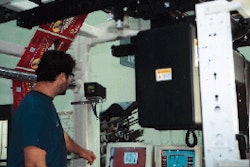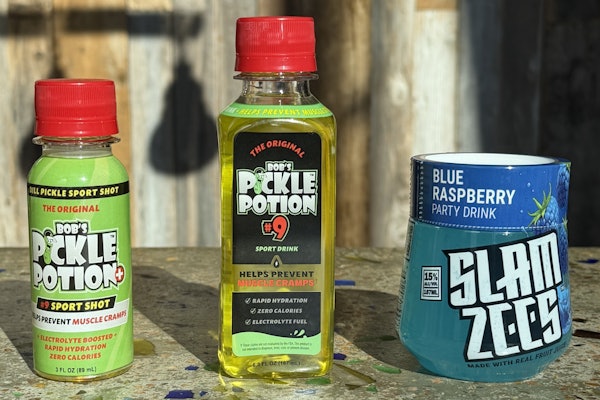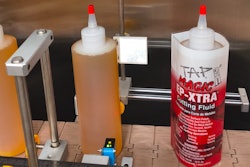Ask anyone who's been around the business of packaging for awhile what it is that makes this business so exciting and the answer is likely to be new technology. Whether it's glass-coated films, exotic shapes for cans, liquid crystal polymers, new and smarter robots, or tougher and more heat-resistant resins, there's always something new to learn about and evaluate. A lot of this learning and even more of the evaluating falls in the lap of the director of packaging. Yet when Packaging World editors asked nearly 40 "industry insiders" what they felt were the most important skills the director of packaging might need in the year 2000, knowledge of new technologies didn't always get the emphasis one might expect. If any single skill surfaced most prominently, it was leadership. "The future job profiles in packaging won't describe people with a bunch of facts in their heads," says Theron Downes, associate director at Michigan State University's School of Packaging. "Rather, they'll describe people who can bring together interdisciplinary teams that can make judgments about what's important. This is a fundamental difference in what I see the packaging person of the future needing compared to what once was." What's interesting is how many different interpretations of leadership our interviewees shared with us. Take Clemson University's Bob Testin, associate professor of packaging science, for example. He states quite emphatically that the one indispensible quality the directors of packaging will require is that they be able to lead a team by being good with people. "Will you need to be a Ph.D. in organic chemistry?" Testin asks rhetorically. "Probably not. But if you are, you'd better be a great people person, too. Because you'll always be responsible for integrating a team, for focusing an effort." John Lowery, a consultant affiliated with Quality Search, a recruitment company specializing in placement of packaging professionals, takes a similar view. "It's what I call a quiet confidence in one's ability to get things done without ramrodding projects through and stepping on toes," says Lowery. This kind of leadership will spring from a blend of technical know-how and effectiveness in creative, persuasive communications. Such a blend, he says, will help the director sell top management on ideas whose importance or significance is primarily technical in nature. Where's the budget? Budgeting and prioritizing are additional leadership skills that any director of packaging will want to have down pat. This has always been true to some extent, but as American businesses continue their quest to be the leanest and meanest kids on the international block, such skills in the year 2000 will be all the more important to the director of packaging. "What you're doing now is managing budgets and increasingly limited resources," says Bruce Cohen, director of packaging at drug maker Glaxo Wellcome. "You have to prioritize and keep your people focused on priorities. What complicates it is that priorities are constantly changing." Cohen believes the director of packaging will have to be able to pick those things that are most important to the company from a business standpoint and marshall all the department's energies on those key strategic initiatives. As for activities that are less critical to the business, "You have to decide whether to do them or not," says Cohen. "Or maybe they can be contracted out to somebody on the outside who will tackle them and report back. Again, it's all about managing resources." It's about philosophy, too. At Glaxo Wellcome, for instance, one philosophy with which Cohen seeks to imbue his staff is that R&D, Production, and Marketing are customers just as much as the pharmacist, or hospital or, ultimately, the patient who ingests the drug that Glaxo Wellcome manufactured. When it comes to these internal departments, "We are providing a service," says Cohen. The need for such a philosophy is more critical than ever, says Cohen, because the profitability of a new drug depends on how quickly you can begin marketing it once you've patented it. The fastest way to reach the market, Cohen believes, is for packaging professionals to have the earliest possible interaction with their customers: R&D, Production, and Marketing. "That's how you reduce the amount of time it takes to get from the bench, if you will, to the marketplace," he says. How to attract talent A different insight on the importance of leadership was provided by Campbell Soup's Mark Niemiec, vice president and director of packaging. He suggests that the leadership skills of the director of packaging be used to position the packaging department so that it's viewed as a career springboard within the company, not a career-limiting department. That kind of leadership will bring bright people into the packaging function, Niemiec observes. And what happens in the absence of leadership from a director of packaging? Bob Esse of Esse Technologies shed some light on that situation at the recent PMMI Productivity Forum when he described a situation some years ago, back when he worked at General Mills. "The packaging functions were scattered across several different groups and had difficulty pulling together as one team with a common objective," Esse told his audience. As a result, projects got delayed, cost overruns developed, and supply chain opportunities were not being managed properly, which resulted in unnecessary spending. When these issues were finally brought to the attention of top management, they responded by creating a new position within the firm: director of packaging. "Things function more effectively with one 'titular' head of packaging," said Esse. "This individual has the responsibility to bring the various packaging groups together to set priorities, establish objectives and resolve alternative scenarios." In addition to these intra-department responsibilities, says Esse, the director of packaging will have to be good at helping those outside the packaging function understand packaging's importance in the company's success. (For an opposing view on the need for director of packaging, see sidebar on p. 30.) The virtues of vendors Another key skill that the director of packaging will require is an ability to nourish and maintain fruitful relationships with vendors. As Jim Scott, director of packaging development at Nabisco Biscuit Co., puts it, "The successful ones will know their suppliers at the right levels and know just who to call when either an opportunity or a crisis arises." Raytheon Appliances' Mike Scheel, manager of packaging engineering, takes that idea a step further. "We're trying to leverage the amount of materials we buy [from a given supplier] and then ask that supplier to assist us with design and development issues," says Scheel. In this scheme, he adds, the director of packaging becomes less focused on specific packaging tasks and will become more of a project manager overseeing a variety of projects simultaneously. In many ways the director of packaging in the year 2000 will be overseeing his or her firm's future, and only by closely collaborating with suppliers can this be done effectively. But the director may have to take a different approach than in the past, says Tetra Pak America's Bill McMillan, vice president of commercial operations. "Directors today are very skilled at knowing what's out there and then being able to pick and choose what's needed," observes McMillan. "In the year 2000, it will be up to the director of packaging to project what's needed and then go out and develop it with suppliers as partners." Doing it well will require someone with a broad base of knowledge, says Rochester Institute of Technology's Dan Goodwin. "The director of packaging will have to be able to wear more hats than in the past," says Goodwin, who chairs RIT's packaging science program. Interdisciplinary skills a must Barbara Blackstone, who works in the food chemistry and packaging department of the National Food Processors Assn., agrees. "The director of the future will need interdisciplinary skills-microbiology, chemistry, packaging-all mixed in with some good, sound business sense," says Blackstone. Mike Schmidt, former director of packaging at Amway Corp., adds to the list of skills. "Product development, quality assurance, purchasing-all these functions must be managed," Schmidt points out. "And managing them presupposes, of course, a fundamental familiarity with them." Or as Larry Gay, director of the packaging program at the California Polytechnic State University, puts it, "If directors don't have a basic understanding of all the technologies involved, they can't properly manage." Nor will it be enough for the directors of packaging to involve themselves only in issues directly related to their companies' packaging, as RIT's Goodwin points out. "The packaging director of the future will have to be prepared to play a more prominent role in the direction the company's business goes, not just the company's packaging," says Goodwin. "He'll need greater familiarity with strategic plans and long-range concerns. He'll need to play a corporate role every bit as prominent as that of any marketing manager." And speaking of marketing, the director of packaging had better have a solid dose of consumer knowledge if he expects to succeed in the year 2000. "He'll have to be consumer-focused, consumer-driven," says Chris DeCoster, senior packaging engineer at the Dial Corp. "I don't want to get a whole team of people launched on a project because a few people in the company think an idea is good. It's important to do your homework with the consumer, to do it well and do it early." Director as lobbyist Virtually all of the interviewees predicted that the packaging director of the future will have to be better informed than ever on issues involving the environment. Amway's Schmidt recounted his recent involvement in committee work done through the Soap and Detergent Assn., an industry group, when legislation governing rigid containers came to a boil in California and Oregon. "The packaging director of the future is likely to get involved in these things more than ever," Schmidt predicts. "It's getting to be an international issue, too, with Germany's DSD, and Austria's ASA and now ISO 14000 (see Packaging World, Oct. '96, p. 000). Directors of packaging will need to educate or influence so that we can reach some harmony on these issues." Keeping current will naturally be important, too, and some of the industry leaders we interviewed indicated that familiarity with the Internet will play an important role in managing the information flow that seems to grow in force with each passing year. As director of packaging and Internet surfer Owen Schweers of Perdue Farms put it, "The director of packaging will have to manage what's here today but also get out there ahead of things." Pity the company whose packaging director in the year 2000 doesn't have that kind of attitude. Because without it, the ability to effectively lead those who practice the packaging function will be all but impossible.























